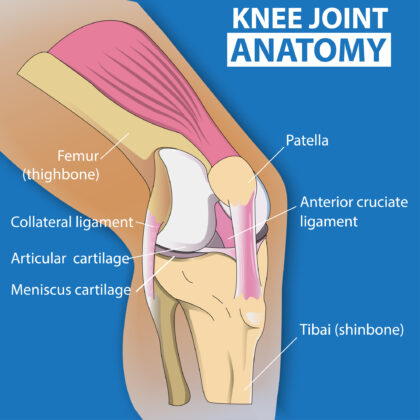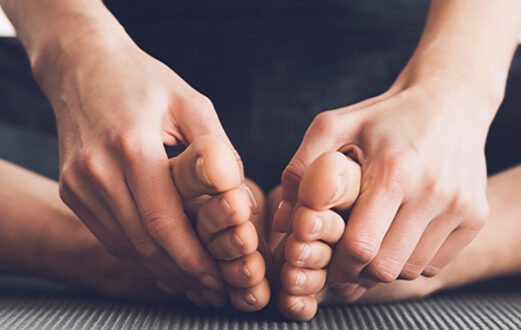
Understanding Joint Pain


Joints are crucial for movement and can be found anywhere in the body where two bones meet. Some joints allow for more movement than others, depending on where they are located in the body and the function they serve. Joints are held together by tendons, connective tissue, and ligaments. Think of them like a spring or cushion for your skeletal system.
One thing is for sure, joints are important and pain caused by inflammation or injury can be debilitating. If joints are weakened or damaged, movement may become difficult or extremely uncomfortable. Understanding joints, the conditions that may affect them and how to keep your joints healthy are key to living an active lifestyle.
What causes joint pain?
Joint pain can be described as feeling stiff or achy. In more extreme cases, it can feel like your bones are grating or throbbing. Pain is typically experienced in the knees, hands, ankles, hips, and shoulders. For some patients, the pain is constant, while for others it comes and goes.
There are several conditions that may cause joint pain. Identifying what is producing the pain is key to determining a treatment plan. Some conditions are hereditary, while others can be brought on by overuse or imbalances.
Osteoarthritis
A form of arthritis, osteoarthritis is caused when the cartilage and tissues making up the joints begin to wear down. Osteoarthritis is most commonly found in middle-aged and elderly patients as the joints wear out over time. However, obesity is known to contribute to earlier diagnosis of osteoarthritis due to the extra strain weight can have on joints.
Rheumatoid Arthritis
This form of arthritis occurs due to inflammation of the joints. The joints will swell and become extremely painful. In some cases, the swelling may be visible. Rheumatoid arthritis is an autoimmune disease that can be inherited or brought on by a hormone imbalance. Unlike osteoarthritis, rheumatoid arthritis can affect any age, though is most common in ages 20 to 50.
Tendonitis
Tendonitis is caused when the tendons, or connective tissue between bones and muscles, is inflamed. Often, it is caused by overuse or repetitive wear from performing an activity over and over. While overuse is the most common cause, it can also be caused by diseases that weaken the muscles, poor posture, age, and even some medications. Tendonitis is most often found in the shoulders or elbows. It can appear in patients of all ages, though is more common in older patients due to tendons weakening over time and tolerating less stress.
Treating and Managing Joint Pain
The first step toward treating joint pain is to identify what is causing the pain. This will help us understand the treatment options and determine the best course forward. Work with your primary care doctor or an expert at Schneck Orthopedic and Sports Medicine to establish what is causing the joint pain and develop a treatment plan.
Depending on the condition causing the pain, treatment options may include:
Exercise or physical therapy
Topical treatments
Weight loss
Medications
At home treatments (ice pack or heating pad)
Dietary supplements
In more severe cases, we may recommend joint replacement to get you back on your feet. At Schneck, Orthopedic and Sports Medicine we work closely with patients to create custom programs fit for their needs. Our surgeons are even able to create custom joints to ensure better alignment to your body’s specifications.
We’re Here To Help
Managing joint pain is possible. Our team of doctors, nurses, physical therapists and staff are here to help you get moving. If you are experiencing joint pain, we recommend attending our joint pain seminars to understand your treatment options and get support from others experiencing similar issues.

